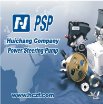-
Welcome to Auto Parts Forum
Whether you are a veteran automotive parts guru or just someone looking for some quick auto parts advice, register today and start a new topic in our forum. Registration is free and you can even sign up with social network platforms such as Facebook, X, and LinkedIn.
The structure of the water pump
-
Similar Topics
-
By Counterman
US Motor Works announced the release of new
link hidden, please login to view Professional Series fuel pump modules in March, 2025. Fuel pump assembly application coverage includes several Audi, Toyota, Infiniti and Nissan models.
The
link hidden, please login to view provides full details. The post
link hidden, please login to view appeared first on link hidden, please login to view.
link hidden, please login to view -
By Counterman
link hidden, please login to view announced its new USMW professional series link hidden, please login to view are now available. The new fuel pump modules provide application coverage for several Toyota, BMW, RAM and Nissan vehicles.
Visit
link hidden, please login to view for detailed applications, or contact customer service for further information.
The post
link hidden, please login to view appeared first on link hidden, please login to view.
link hidden, please login to view -
By Counterman
link hidden, please login to view has launched the new BKS1002 fuel pump kit. This new model is engineered specifically for high-pressure, in-tank applications and is the highest flowing fuel pump in the TI Automotive catalog, according to the company. The BKS1002 fuel pump kit will feature:
High-pressure, high-flow E5LM brushless screw pump 3’ long wire harness for tank mounting High-performance inlet filter Support of 1,000+ horsepower “The BKS1002 further expands our line of fuel pump kits with another high-pressure, high-performance technology, but adds additional flexibility for enthusiasts,” said Brian Altenberger, aftermarket business director, TI Automotive. “There has been a significant demand in the market for the option to purchase a standalone pump and the BKS1002 now provides that option.”
TI Automotive Aftermarket said its BKS1002 must be driven with a sensorless 6-step commutation method or other suitable methods such as Sinusoidal or Field Oriented Control (FOC). The BKS1002 pump, filter and wire harness are all components from the BKS1001, but without the controller. The BKS1001 will remain available, however customers who already utilize a controller may now opt to purchase a kit without one, offering additional build flexibility.
The post
link hidden, please login to view appeared first on link hidden, please login to view.
link hidden, please login to view -
-
By 1772668470
Installing a power steering pump involves several steps. It’s important to have the correct tools and follow safety precautions. Here’s a step-by-step guide to help you through the process:
Tools and Materials Needed:
New power steering pump
Power steering fluid
Wrench set
Screwdrivers
Pulley puller (if necessary)
Jack and jack stands
Drain pan
Safety glasses and gloves
Torque wrench
Steps to Install a Power Steering Pump:
-




Recommended Posts
Join the conversation
You can post now and register later. If you have an account, sign in now to post with your account.
Note: Your post will require moderator approval before it will be visible.